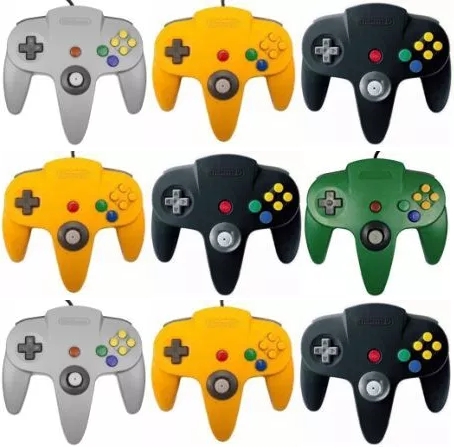
Have you ever wondered how the Nintendo 64’s Analog Stick works? Or what Rez looked like before its wireframe aesthetic was added in? And just what were game developers working on in the early days before Atari?
Have no fear, we’re able to answer all three of those questions in this edition of Best-Sized Game History…
![]() You can find a lot of dedicated video game historians on Twitter, and in 280 characters or less, they always manage to unearth some amazing artifacts. Bite-Sized Game History aims to collect some of the best stuff I find on the social media platform.
You can find a lot of dedicated video game historians on Twitter, and in 280 characters or less, they always manage to unearth some amazing artifacts. Bite-Sized Game History aims to collect some of the best stuff I find on the social media platform.
The three-pronged monstrosity that Nintendo shipped with the Nintendo 64 divides gamers to this day. Some will forever sing the praises of the one-of-a-kind controller, while others just can’t get a handle on it.
Whichever side of the fence you fall on, you have to admit that the controller’s Analog Stick is an amazing piece of technology that changed the course of console gaming forever. It also doesn’t look anything like any of the thumbsticks that would follow it. And that’s because the Nintendo 64’s Analog Stick was built using a unique plastic-on-plastic design that would inadvertently shave off part of the connector as you played (and produce a tell-tale smattering of plastic dust that most N64 owners are very familiar with).
You can get a closer look at the Analog Stick assembly with this How Things Work video:
This is how a Nintendo 64 analog stick works
— How Things Work (@ThingsWork) September 22, 2018
[Tweet Removed]
Rez has earned a place on the Video Game Canon thanks to its interesting visual presentation and pulsating soundtrack (and partly because of the infamous Trance Vibrator). But the game went through several other iterations before Producer Tetsuya Mizuguchi and Director Jun Kobayashi found inspiration in the music visualization programs that were popular in the late 1990s.
In this video, posted by game historian John Anderson, Kobayashi shows off the bright blue sky found in one of Rez‘s earlier prototypes:
Early Sega Dreamcast prototypes of REZ shown off by game director Jun Kobayashi in 2000/2001. pic.twitter.com/SOB1GW2B1F
— John Andersen (@JohnAndersen21) September 29, 2018
Long before Rez, game developers used vector graphics to rearrange a computer’s primitive display technology into a game board. In this video, recently unearthed by game historian Frank Cifaldi, developers from the late 60s demonstrate early game adaptations of pool and chess:
From the same program: Footage of an early computer chess game. I have no idea what these clips are from: all that Getty says is that it's owned by HBO and part of a collection called "Fusion." pic.twitter.com/pjxRgHfH6a
— Frank Cifaldi (@frankcifaldi) October 6, 2018
Hope you enjoyed this edition of Bite-Sized Game History. And be sure to follow me on Twitter for more bite-sized history lessons.

